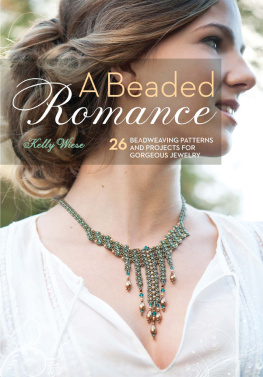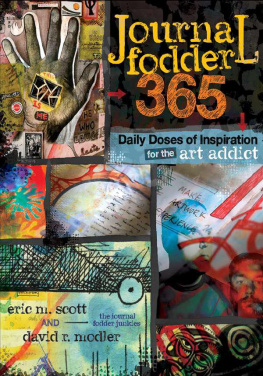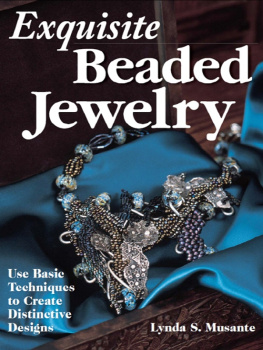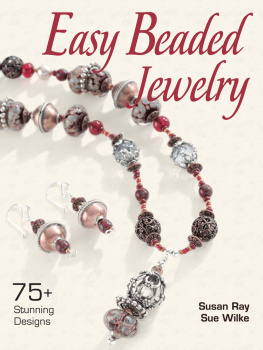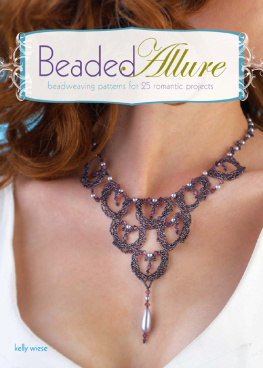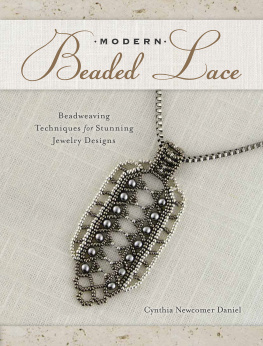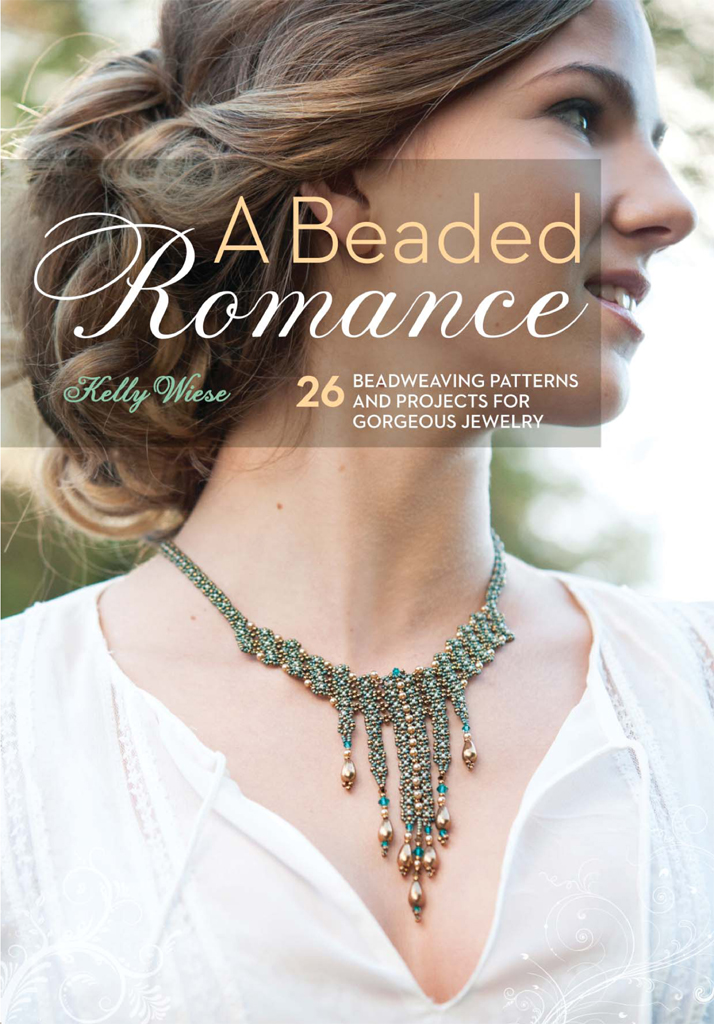Contents
Landmarks
A Beaded Romance
26 BEADWEAVING PATTERNS AND PROJECTS FOR GORGEOUS JEWELRY
Kelly Wiese
KP Craft
Dedication
This book is for:
My husband, Paul, who has given me his love and encouragement from day one, even on my crazy daysand believe me, there were a few of those.
My mom and dad, who are the most supportive parents a girl could have. They passed their creativity on to me, and for that I will be eternally grateful.
My good friend Virginia: She holds my hand on the airplane and is always there to encourage me when I am having doubts. She also reminds me when I need to put those big girl panties on.
These are the same wonderful people who supported me through my first book, and they stood by me again as this book became a reality. I love and thank you with all my heart. You mean the world to me!
Introduction
Beading is my passion, but books are not far behind, so being able to have my name on a beading book was a dream come true. Being able to do a second book has been just as rewarding as doing my first book, Beaded Allure. Ive learned more lessons along the way, one of which is to make more notes so I can remember what I did previously. Then I just have to remember where I put the notes!
With this book, I wanted to offer my fellow beaders more romantic, delicate designs to choose from. Over time my style has evolved, but one thing has stayed relatively the same: my love of designing jewelry that tends to be a little on the vintage side but with a modern edge.
My color choices are often subtle. I love jewel tones and metallics and use them in most of my work. I do encourage you to discover and follow your own color preferences. In the books projects, I refer to main colors and accent colors; the colors of beads you select for these is entirely up to you. (Within parentheses following the bead types in each materials list are the bead colors I used for the projects shown.)
These designs are a jumping-off point. They can be made as is, or they can be adapted and changed to suit your own tastes. Explore all the possibilities that you can dream of.
I have had some fantastic opportunities over the last several years, and I have met some amazing people. Since my first book came out, my world has expanded and it has been a great experience. The love and support that exists in the beading community is marvelous, and I am very happy to be a part of it.
If you are a new beader, I encourage you to enter the wonderful world of beading. This book will give you some basic skills and help you to build upon them. If you are an experienced beader, I think you will find inspiring projects to pique your interest. Either way, I hope you enjoy using this book as much as I enjoyed creating the projects.
Beadweaving Basics
This section will cover some of the basic stitches used in the projects. Look them over and get a feel for them. It will also cover the items you need to get started. Thankfully, beadweaving doesnt require a lot of expensive . Experiment with the different threads, needles and materials available until you find the ones that you like best. Ask any experienced beader and you will find that each one has favorites that are sworn by.
Tools and Materials
THREAD
There are several different types of beading thread to choose from. I prefer Nymo Size D (Nymo comes in a variety of sizes). It is an inexpensive nylon thread that comes in a wide range of colors. Size D is fairly strong but thin enough to get several passes of thread easily through size 11 and size 15 Japanese seed beads.
FireLine is another option. It comes in several different weights and colors. It is great for working with crystals and other beads that have sharp edges, as it tends to be a little stronger than thread.
One-G is a thread from TOHO Beads out of Japan. It is a little more expensive than Nymo. It does come in a nice selection of colors. I have found it to be easy to work with.
Silamide is a twisted thread that is fairly strong. It also comes in several different colors.
THREAD CONDITIONERS
Thread Heaven is an inexpensive, synthetic thread conditioner that lasts a very long time. I find that it helps to keep my thread from knotting, so I use it for all my projects.
Beeswax is a good option if you are making a vessel or a piece that needs more support. It can make your beadwork a little stiffer, but it can fill up the beads with wax. Use it sparingly so you dont clog up your beads!
There is also a synthetic beeswax. I like it better than natural beeswax because it doesnt fill up the beads as much and its not as sticky.
BEADING MATS
When working with seed beads, it is always a good idea to have a soft surface to spread out your beads. I use the vellux bead mats that most bead stores carry.
They come in different colors and can be cleaned in the washer and dryer. Consider cutting up a vellux blanket to have lots of bead mats! Ultrasuede or suede also works nicely. Glue or tape a piece of vellux or suede into a plastic tray (a tray without a deep side works best) for a great surface to spread out your beads. The small lip helps to keep the beads from rolling off the material.
NEEDLES
Needles come in a variety of sizes. I use size 12 beading needles. They are fairly long, and I find that they easily fit through seed beads with several passes of thread. They are also a little flexible, which can be an asset when you have a tight space to bead through.
A size 11 beading needle is slightly larger and has a larger eye. If you have a hard time threading the needle, this is a good size to use.
Some beaders like sharp needles. They are much shorter than a beading needle, but they come in the same sizes as beading needles. When working with suede for bead embroidery, they can be a useful option.
TASK LAMP
Good lighting is key to beadwork. A full-color spectrum light, such as an OttLite, imitates natural light. This type of light is ideal for picking out colors.
Other small desk lights also work, but its best to avoid picking out colors under a yellow-hued light; picking out the colors in sunlight will give you better results.
Some lights also come with a magnifier, a useful accessory for any beader.
PLIERS
It can be handy to have a small pair of pliers with smooth jaws. They can be used to break a bead to correct a mistake or to pull your thread through a bead that is getting full of thread (just be careful when you do this because you can end up breaking a bead you didnt want to break).
BEADS
Japanese seed beads come in a variety of sizes. The larger the number, the smaller the bead. The projects in this book use mostly size 11 and size 15 seed beads. Sizes 6 and 8 seed beads make nice accent beads. Seed beads also come in many colors and finishes. I tend to stay away from galvanized beads and those that have dyed finishes because the color can rub off or fade.

